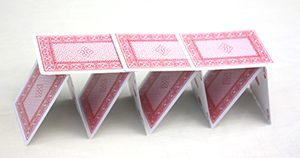

Month: May 2017
Welcome to the Busybird blog, where you can find helpful articles, updates, industry news and more. Make sure you stay up to date by signing up to our newsletter below.
An Underview of Structure
May 18, 2017 Lots of people struggle with structure, unable to conceptualise something they consider an abstract. We can point to prose. We can point to plot. We can point to characters. But outside a basic understanding of the three-act structure – and this is a foundation, rather than the framework we build on it – how can we point to structure?
Lots of people struggle with structure, unable to conceptualise something they consider an abstract. We can point to prose. We can point to plot. We can point to characters. But outside a basic understanding of the three-act structure – and this is a foundation, rather than the framework we build on it – how can we point to structure?
The simplest dilution of structure is that it’s linear – that a story begins here and it moves forward logically and ends there. Often, it’s chronological. But is it? If you think about it, even chronological stories will digress into the past as they deliver backstory that offers context for what happens, or provides us an anecdote that gives us a greater understanding of a particular character, or event. Technically, we’re backstepping into history here.
Before we explore this further, we need a general scenario to discuss, so let’s pose a hypothetical story (the bracketed numbers are used later as reference points, so keep track of them!):
- Chapter I: a newly married couple move into a house. As they move in over a period of two days, our protagonist (the wife) briefly thinks about her wedding two years ago.(1).
- Chapter II: Over a period of a fortnight, the couple are settling in, when the protagonist thinks briefly about her father’s death five years ago (2).
- Chapter III: over the next month as the couple dive into their new lives, the protagonist grows melancholy and has a longish digression about her father’s funeral. (3)
- And then, from there, that digression devolves into a painful and long (like over twelve paragraphs-long) exploration of the protagonist’s parents separation ten years prior (4) to the funeral.
- Chapter IV: over the next three months the story progresses about the couple settling into the neighbourhood and their jobs with no digressions. But then the protagonist meets somebody at work who they grow attracted to. The attraction is reciprocated. They have sex in a broom closet.
- Chapter V: Over the course of a single day, the protagonist wonders how her life has come undone, and in a brief digression, traces it back to her miscarriage (5) four years ago.
- when the story resumes, it picks up several days after the last digression, the protagonist trying to move forward as if nothing has happened. It’s just worth noting again that the narrative doesn’t immediately resume from wherever it left off.
An exercise that can help us conceptualise structure is to think about it diagrammatically. Imagine we could draw up a graph that would chart the following:
- the forward course of a story represented by a red line moving left-to-right.
- digressions and, firstly, how far into the past they dipped.
- secondly, how many paragraphs these digressions took.
- how many days elapsed in each chapter.
A chart plotting our hypothetical story might look like this …
Much of this is self-explanatory. The red line moves forward, charting the story’s progress. It then dips vertically to represent a digression into the past. From there, it’s new horizontal path aligns with the numbered 1–5 boxes, which shows how many paragraphs the digression uses. The red line then angles up to reconnect with the present-day story – usually picking up where it left off (bar for the exception in Chapter V). We also get to see how many days each chapter spans in story-time (in the highlighted yellow cells).
Now this is very basic diagramming of a novel’s structure. We could continue to break it down into smaller components, etc., but it gives you an idea how the story develops over the course of the narrative.
To the naked eye, how balanced is it?
Does the pacing look right, focusing on just a couple of days, then skimming through months? How about the digressions – particularly the one about the father’s funeral, and the parents’ divorce? Are there too many digressions? What do you think when you look at a simple graph like this? Does it look balanced? Or do you get a sense of unwieldiness?
Think about it. In the next blog we’ll look at what this graph suggests.
An Overview of Structure
May 4, 2017 Structure is a big issue in a lot of writing, especially among inexperienced authors. Often, inexperienced authors will spill everything on the page, and let the narrative take them – and their story – where it will. This might feel natural to them. If it feels natural, they might believe it’s justified. And, as far as they go, the narrative might be perfectly understandable, but this is only because they know their story. A reader doesn’t. A reader needs to be guided through the narrative. If there’s structural issues, they’ll be jolted. Be jolted often enough, and they’ll lose interest, finding it too hard to follow. Be jolted bad enough, and they’ll be shaken right out of the story.
Structure is a big issue in a lot of writing, especially among inexperienced authors. Often, inexperienced authors will spill everything on the page, and let the narrative take them – and their story – where it will. This might feel natural to them. If it feels natural, they might believe it’s justified. And, as far as they go, the narrative might be perfectly understandable, but this is only because they know their story. A reader doesn’t. A reader needs to be guided through the narrative. If there’s structural issues, they’ll be jolted. Be jolted often enough, and they’ll lose interest, finding it too hard to follow. Be jolted bad enough, and they’ll be shaken right out of the story.
This doesn’t mean structure always has to be straightforward. It can be innovative. Martin Amis’s Time’s Arrow – which was shortlisted for the 1991 Booker Prize – runs backward, starting with the narrator’s death, and seeing him become younger and younger. Everything is reversed – the narrative, the dialogue, the events.
Each chapter of Christos Tsiolkas’s Barracuda alternates between two timelines, using a different POV in each – first person in the present, third person in the past. Through this technique, we’re immediately aware the character has had some sort of downfall and struggling to reconcile his life, and then we get to know him as he’s younger, driven, and pursuing the goal of becoming an Olympic swimmer.
In both these examples, there’s a logic to the structure, so the reader can become comfortable and trust that the author will – ultimately – get them to their destination. If that trust isn’t built, the reader will disinvest. Using the example of Barracuda, if the first ten chapters alternated between present and past, and then there were three successive chapters in the past, the reader would query why the story has detoured. If there’s no logic to it, the reader will lose faith that the story has a purpose, and that’s one thing any author can’t afford. If a reader doesn’t believe in your ability to tell a story, they’re certainly not going to believe in your story.
But writers do battle with structure – often because they cannot filter an overflowing imagination into an articulate and purposeful journey. Instead, it’s the randomness. And in the randomness, there’s chaos, tantamount to taking a jigsaw, doing half of it, forcing one/quarter of the pieces where they don’t belong, and letting the rest fall where they may. You’ll get an idea what the whole picture is meant to be, but never really see it properly.
In the next blog in a fortnight’s time, we’ll look at mapping structure.

